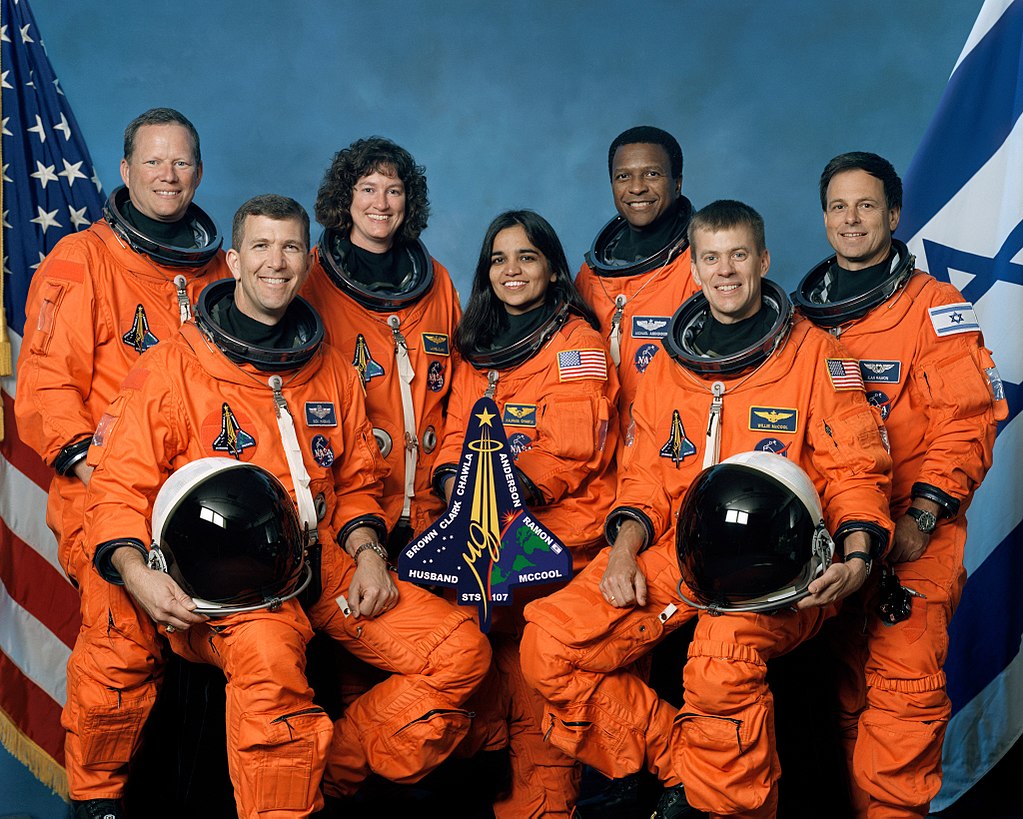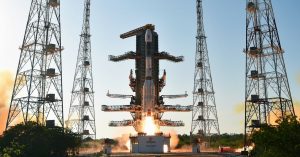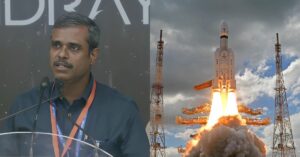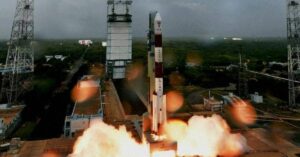Women’s Day Exclusive: Kalpana Chawla’s Father Remembers His Iconic Daughter
“We must do whatever we can ensure young girls get an education, particularly those from difficult circumstances. If given a chance, these young girls will shine. This is what Kalpana would have also wanted,” says her father Banarasi Lal Chawla. #WomensDay #SheDared

On 1 February 2003, the world lost an icon in Kalpana Chawla, who along with six other crew members, died in the Columbia Space Shuttle disaster. She was only 40 at the time of her death, but the legacy she leaves behind is immeasurable.
National Geographic has sought to capture her inspirational journey in their documentary, Kalpana, which will premier at 9:00 pm IST on 8 March, 2020.
Kalpana, just like her name, lived her imagination and visualised infinite possibilities. A role model for many young women in India and around the world, she will always be remembered for her incredible journey from Karnal, where she was born, to NASA, where she fulfilled her dream of reaching the stars.
In a fascinating old clip, which you can watch here, she says, “It was very far fetched for me to think that I would get to fly in a space shuttle. I lived in a very small town in India. Forget about space, I didn’t even know whether my folks would let me go to engineering college. I think I was very lucky that we lived in a town which had flying clubs. We would see these small airplanes and would ask my dad if we could get a ride in one of these planes. He took us to the flying club and got us a ride.”

Bucking the trend, she chose to study aeronautical engineering instead of the more popular mechanical engineering at Punjab Engineering College, which also didn’t have a girls hostel at the time. After obtaining her degree, she did her Masters at the University of Texas.
She would go onto earn her PhD in aerospace engineering in 1988 from the University of Colorado Boulder and began working at the NASA Ames Research Centre studying computational fluid dynamics.
Despite working in NASA, she always had her final goal in sight, which was to become an astronaut. She applied for the NASA Astronaut Corps in the early 1990s and joined them in 1995 after undergoing a brutal programme.
In 1996, she was selected for her first flight, and her first space mission began on 19 November 1997, as part of a six-member crew that flew the Space Shuttle Columbia flight STS-87. The rest, as they say, is history.
Speaking to The Better India, her father Banarasi Lal Chawla vividly talks about the legacy she leaves behind and the enduring message of her life.

“Her dream was that no one in this world should be deprived of an education. More specifically, no one should miss out on learning about the wonders of science. She also wanted people to exhibit kindness, compassion, love and encouragement. She believed that the world is one. When in space, someone asked her how it felt to make it there from India. Paraphrasing the ancient Roman philosopher Seneca, she said, ‘I was not born for a corner of the universe. The whole universe is my native land. The people living in this universe are my family.’ In her life, she remained true to these ideals,” says Chawla.
There are so many examples from her life where she exhibited a humanism that we rarely find now. Chawla remembers one instance when a computer engineer from Nigeria called him up in the aftermath of Kalpana’s demise. Although he couldn’t recall the young engineer’s name, the episode gives us a glimpse of the kind of person Kalpana was.
“I was in Karnal when I received the call, and he spoke about wanting to meet me. Initially, I rejected the idea telling him that if he wanted to say anything to me, he could say on the phone instead of spending a lot of money on a long journey. But he was adamant about meeting me in person,” he recalls.
One beautiful day, Chawla got another call from him, and this time the engineer had landed in Delhi. After taking down Chawla’s address, he drove down 125 km to meet him.
“He began the story by telling me that he had first met Kalpana when she had visited his university in the States to give a lecture. They remained in touch and when he faced a difficult financial situation, Kalpana met him, gave him sound advice on his academics and career, and wished him all the best. But there was more to it. She also sent monthly checks to him from her own account. Thanks to her assistance, he graduated from university and became a successful computer engineer,” recalls Chawla.
Thanks to Kalpana, this man from Nigeria could pursue what he loved and earn a livelihood.
“When he got news of the tragic accident, he found my number from the people at NASA and called me. Upon meeting me and expressing his gratitude, he told me that it felt like a massive weight off his chest. Kalpana wished that no one in this world remained unlettered, poor and despondent. She felt it was her solemn duty to work with people and help others in any way she could,” he adds.
Another facet of her humanism was a deep desire to open doors for young girls in India into the world of science. When Kalpana was working with NASA, she would often tell her parents how she missed her school Tagore Bal Niketan in Karnal and wanted to do something for them.
When Geoffrey Munes, the Director of the International Space School Foundation at NASA, asked Kalpana to suggest some Indian students for a summer programme, she knew exactly who to call—her old alma mater.
“She wrote a letter to the school telling them that she was once a student there, who works at NASA and requested that they send two of their brightest girl students to the States, where she would show them around. From picking them up at the airport, giving them accommodation to even cooking meals, Kalpana took care of the girls,” says Chawla.
Every year, these girls would attend a 15-day summer session of the International Summer Space School Foundation at NASA, and starting from 1998 until her demise, she hosted 14 girl students. Even though Kalpana has left this world, this practice continues till this day.

“The world is a beautiful place, but we must strive to make it better. In particular, we must do whatever we can ensure young girls get an education, particularly those whose circumstances make it difficult for them to study. If given a chance, these young girls will shine and share their wealth of knowledge with the world. This is the message I want to relay to the world. This is what Kalpana would have also wanted,” says Chawla.
Finally, another facet of her humanism was her remarkable pursuit of knowledge and dedication to her craft. This was best exemplified during her last mission in space.
One of the complicated experiments the crew aboard Columbia had to conduct was the water-mist fire suppression experiment (MIST) overseen by Dr Angel Abbud-Madrid on Earth. Today, he is the Director of the Center for Space Resources at the Colorado School of Mines. The results of this complicated experiment led to the design, test and launch of the water-mist portable fire extinguishers, which are now part of the International Space Station.
In an emotional letter Dr Abbud-Madrid wrote after Kalpana’s tragic death, he said,
Needless to say I will be forever thankful for the extra effort you put to recover the experiment after its initial leak problem. Five hours of volunteered off-duty and meal time were unheard of and definitely never to be expected from any crew member according to NASA rules. But you knew very well that the effort meant rescuing MIST and five long years of hard work and high hopes. Once we were up and running you do not have an idea how grateful I was and how desperately I wanted to let you know and thank you.
My only consolation is that you may have read the flight note uplinked at the end of MIST operations explaining our outstanding results and our many thanks to the crew. Everything worked just right and we obtained more science than we had expected. I cannot lie and pretend I do not feel a mixture of joy and sadness when I watch and listen to the videos downlinked from space. They acted as an electronic lifeline that captured the voice and actions of all of you in space and brought them down to Earth to preserve them forever…
You see KC [Kalpana Chawla], we need real heroes and role models and you have definitely broken every barrier and defy many stereotypes. Your example has and will continue to open doors for many people following your same dreams.
What Kalpana did with her life was making young girls in India believe that such a dream is even possible.
That’s where her magic continues to reside.
Also Read: ‘Women Can’t Do Science’: 8 Trailblazing Scientists Busting The Myth
(Edited by Gayatri Mishra)
Like this story? Or have something to share? Write to us: [email protected], or connect with us on Facebook and Twitter.
This story made me
-
97
-
121
-
89
-
167
Tell Us More
We bring stories straight from the heart of India, to inspire millions and create a wave of impact. Our positive movement is growing bigger everyday, and we would love for you to join it.
Please contribute whatever you can, every little penny helps our team in bringing you more stories that support dreams and spread hope.



















